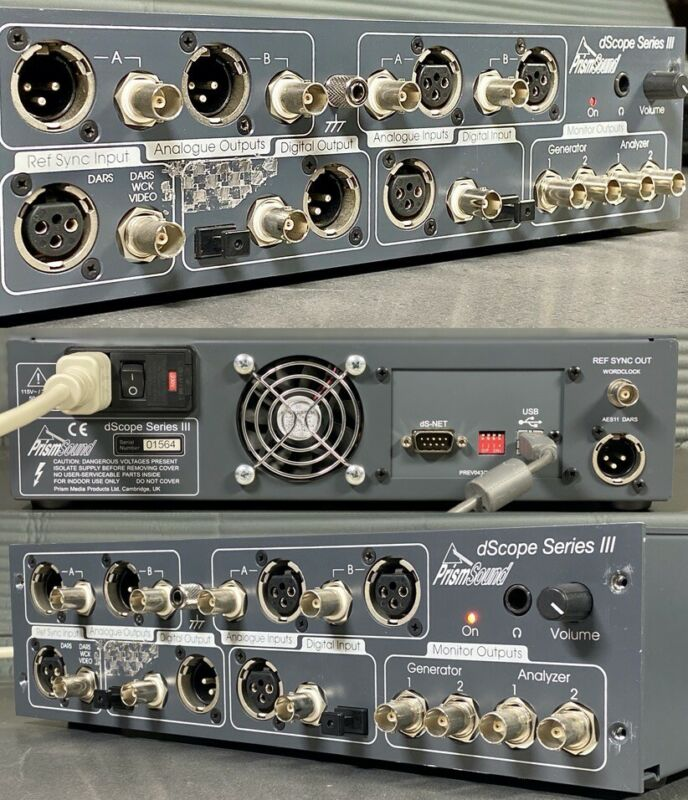Although one of the benefits of class-D amplifiers that has been touted for so long is efficiency, in practice the amps can still generate a sufficient amount of heat and the switch-mode power supplies also contribute to this heat. The Hypex NCore amps are no exception. A look at the data sheet shows that for the NC502MP producing 400 watts a channel into 4 ohms the amps will dissipate about 200 watts which equates to around 80% efficiency. Whilst this looks good on paper, 200 watts of power dissipation will quickly raise the temperature of the small plate heat-sink on the amp module to unsafe levels unless this heat can be channeled away quickly. Then there is the question of dealing with 3 more stereo amps for a total channel count of eight amps each dissipating a given amount of power depending on the frequency response and program content. Although the power output of the amps should diminish the higher the frequency range they are ask to handle, the thermal requirements should not be assumed to be negligible. This a mistake many people make with class-D amps by mounting them on a thread-bare chassis with minimal thermal capacity thus questioning the long-term reliability of the design as a whole.
Our custom designed case works exceptionally well at dissipating huge amounts of thermal energy away from the amp. All of the amps are mounted on a 10 mm thick aluminium heat spreading plate with a large surface area the size of the bottom of the case. This acts as a transient thermal sink with a huge thermal capacity and which can sink a huge amount of transient energy without raising the temperature quickly to unsafe levels. Then the wrap around case with a large amount of surface area acts to slowly dissipate away this energy using convection.
Add to this is our thermal management system which monitors and reports temperature extremes on a channel by channel basis whilst maintaining temperatures inside the case at safe levels. We deploy a 60mm fan chosen for its low noise level along with a dedicated fan controller which employ both a fan and thermal closed loop control system which carefully ramps up the fan speed over a range of temperatures in order to keep the temperature of the system at a sustainable level and without generating intrusive noise.
The firmware has a diagnostic mode which can continually report the amplifier status over a serial port, including temperatures and fan speed. We can see the first two channels are working hard because the on-board thermistors are reporting higher temperatures than the other channels which are sitting idle. The last two channels are not showing anything because the HF100 modules do not include the thermistors. The temperature of the heat spreading plate has risen to 34 degrees and the fan has already spun up to 1500 RPM to get rid of any excess heat inside the case. If the thermistor temperature rises to 80 degrees C the respective channel indicator LED will turn white. Further increases above 90 degrees will shut down the amplifier until the temperature is reduced to 80 degrees.
[attachment id=1 msg=20]
Our custom designed case works exceptionally well at dissipating huge amounts of thermal energy away from the amp. All of the amps are mounted on a 10 mm thick aluminium heat spreading plate with a large surface area the size of the bottom of the case. This acts as a transient thermal sink with a huge thermal capacity and which can sink a huge amount of transient energy without raising the temperature quickly to unsafe levels. Then the wrap around case with a large amount of surface area acts to slowly dissipate away this energy using convection.
Add to this is our thermal management system which monitors and reports temperature extremes on a channel by channel basis whilst maintaining temperatures inside the case at safe levels. We deploy a 60mm fan chosen for its low noise level along with a dedicated fan controller which employ both a fan and thermal closed loop control system which carefully ramps up the fan speed over a range of temperatures in order to keep the temperature of the system at a sustainable level and without generating intrusive noise.
The firmware has a diagnostic mode which can continually report the amplifier status over a serial port, including temperatures and fan speed. We can see the first two channels are working hard because the on-board thermistors are reporting higher temperatures than the other channels which are sitting idle. The last two channels are not showing anything because the HF100 modules do not include the thermistors. The temperature of the heat spreading plate has risen to 34 degrees and the fan has already spun up to 1500 RPM to get rid of any excess heat inside the case. If the thermistor temperature rises to 80 degrees C the respective channel indicator LED will turn white. Further increases above 90 degrees will shut down the amplifier until the temperature is reduced to 80 degrees.
[attachment id=1 msg=20]

 The results will shock you at how powerful these amps really are and how well designed the switch mode power supplies are to maintain tight regulation and almost doubling power into 4 ohms
The results will shock you at how powerful these amps really are and how well designed the switch mode power supplies are to maintain tight regulation and almost doubling power into 4 ohms 
